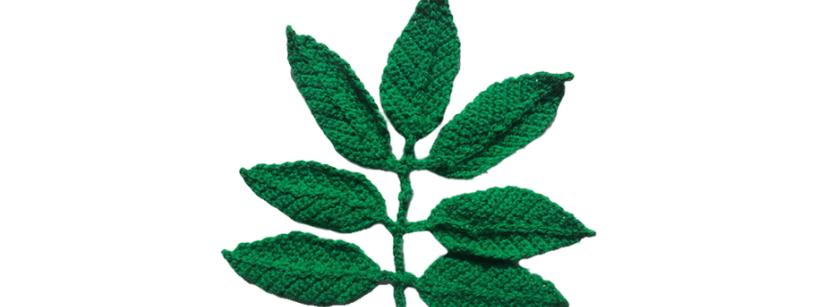Have you had enough passive screen-time and want to make something with your hands, maybe learning a new skill in the process? Join us in contributing to a gallery display of Griffith Park in crochet, with the help of these how-to videos.
As part of our exhibition Investigating Griffith Park we’re inviting the Autry community to make pieces to represent various aspects of the park, from nature to recreational activities, and mail them into the Autry (or drop them off in person once the museum re-opens, if you prefer). We’ll then add your art to the gallery, around a crocheted Griffith Park sign, to capture the essence of the park and create a post-pandemic community display.
This week’s video shows you how to make an elderberry leaf to hang on our sculpture of an elderberry tree in the gallery. The sculpture was created by exhibition designer Gene Wyrick, using elderberry branches from his own trees, to illustrate the importance of the species for both the eco-system and for the Tongva people, who continue to use the plant in many ways.
You don’t need experience with crochet, as instructor Julie Kadoi walks you through the basic stitches, and for those more comfortable with working from written instructions we have included the pattern below. So, pick up those hooks and yarn, make an elderberry leaf for our sculpture (or maybe a leafy daisy , a kite, a butterfly or a California Poppy from previous videos), and look for future videos in the coming weeks.
